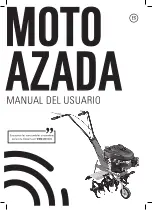
Page 15
Due to continuous product research and development,
the information contained herein is subject to change without notice.
www.stoddart.com.au
www.stoddart.co.nz
Operation
Temperature Adjustment
To display target set point; in programming mode it selects a parameter or confirm an operation.
To start a manual defrost.
To see the maximum stored temperature; in programming mode it browses the parameter codes or
increases the displayed value.
To see the minimum stored temperature; in programming mode it browses the parameter codes or
increases the displayed value.
To switch the instrument OFF, if
onF = oFF
.
Not enabled.
(DEF)
KEY FUNCTIONS:
(UP)
(DOWN)
To lock and unlock the keyboard.
To return to the room temperature display.
KEY COMBINATIONS:
1. Push and immediately release the
SET
key, the display will show the set point value
2. Push and immediately release the
SET
key or wait 5 seconds to display the probe value again
HOW TO SEE THE SET POINT:
1. Push the
SET
key for more than 2 seconds to change the set point value
2. The value of the set point will be displayed and the “°C” LED starts blinking
4. To memorise the new set point value push the
SET
key again or wait 10 seconds
HOW TO CHANGE THE SET POINT:
3. To change the set point value push the or arrows within 10 seconds
To enter in programming mode. (Contact the Stoddart Service Department)
Note:
• The “Refrigerator” temperature can be set between 2°C and 4°C� How to set the temperature is shown below
• Different modes require different temperatures
• The temperature probe only measures the temperature of the water/air, NOT the food temperature
IMPORTANT
Threaded fasteners can loosen in service.
Regular inspection and adjustment
should be carried out as required
WARNING
This unit is NOT waterproof, DO NOT
hose. DO NOT pour water directly onto
the unit. DO NOT immerse in water
IMPORTANT
Some commercial stainless steel
cleaners leave residue or fi lm on the
metal that may entrap fi ne particles of
food, deeming the surface not
FOOD SAFE
WARNING
This unit includes refrigeration
components.
Cold surfaces can burn DO NOT touch
these surfaces
• Cleaning is recommended for health and safety purposes and to prolong the life of the unit
• DO NOT
use abrasive pads or cleaners on the stainless steel or any other metal parts of the unit
• DO NOT
use industrial chemical cleaners, fl ammable cleaners, caustic based cleaners or bleaches and bleaching agents, as many will
damage the metals and plastics used on this unit
• DO NOT
remove any screws and/or panels for cleaning (unless directed)
• This unit is
NOT
waterproof,
DO NOT
hose,
DO NOT
pour water directly onto the unit,
DO NOT
immerse in water
• Stainless steel exhibits good resistance to corrosion however, if not properly maintained stainless steel can rust and/or corrode
• Any sign of mild rust and/or corrosion should be thoroughly cleaned with warm soapy water and dried as soon as possible
• NEVER use abrasive pads or cleaners for cleaning
• All metal surfaces should be checked while cleaning for damage, scuffs or scrapes as these can lead to rust and further damage to the
product
• Mild rust and/or corrosion can be treated with a commercial cleaning agent that contains citric/oxalic/nitric/phosphoric acid�
DO NOT
use cleaning agents with chlorides or other harsh chemicals as this can cause corrosion�
After treatment, wash with warm (not hot) soapy water and dry thoroughly
• Thoroughly wipe the surfaces dry after cleaning�
DO NOT
let water pool on the unit� Check crevices and folds for pooling
• When using, ensure all liquids and moisture is cleaned up straight away�
Food liquids such as juices from vegetables and fruits should not be left on preparation surfaces
• DO NOT
leave items on the stainless steel such as cutting boards, rubber mats and bottles
• To protect the polished surface of the stainless steel, it should be dried using a clean dry soft cloth� A light oil can be applied to
enhance the stainless steel surface, using a clean cloth apply the oil in the same direction as grained polished fi nish
• Some commercial stainless steel cleaners can leave residue or fi lm on the metal; this may trap fi ne particles of food on the surface,
thus deeming the surfaces not food safe









































